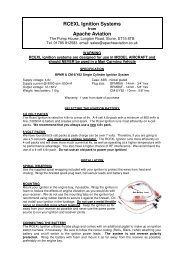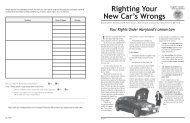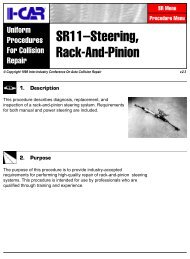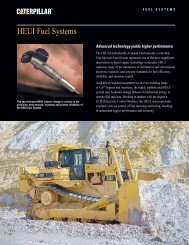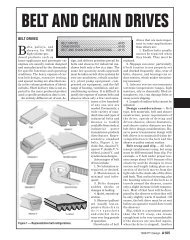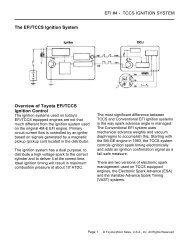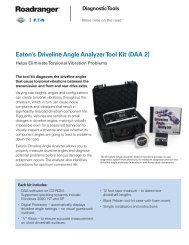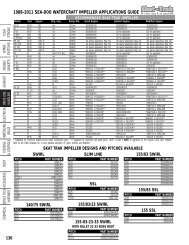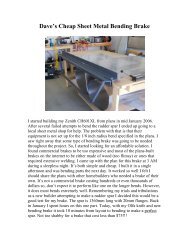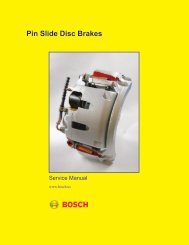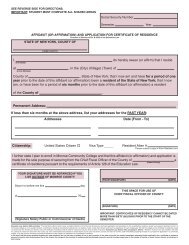DIESEL FUELS & DIESEL FUEL SYSTEMS
Diesel Fuel Systems - weindex.info
Diesel Fuel Systems - weindex.info
You also want an ePaper? Increase the reach of your titles
YUMPU automatically turns print PDFs into web optimized ePapers that Google loves.
Application and Installation GuideDiesel Fuels & Diesel Fuel Systems• Fill line - Located above thehigh fuel level, with outletbaffled to prevent agitation ofsediment in the tank.• Delivery line - Located nearthe bottom but not so low asto pick up collected sedimentor condensation.• Return line - To carry excessfuel back to the auxiliary tank.Should have its outlet baffledfor the reason describedabove.• Overflow line - Allows excessfuel to return to the main tankin event of overfilling of theauxiliary tank.• Vent line - Allows air pressureto equalize as tank is drainedor filled (vent cap should belocated away from open flameor sparks).• Drain valve - Allows removalof condensate and sediment.• Sight glass or float-type gauge- Provides a positive check onfuel level.To prevent damage to the fuelfilter housings, the return line shouldhave no valves or restrictions toallow dangerous pressure buildups.Flexible rubber hoses, used as fuelreturn lines, should be supported toprevent closing off over time due toweight of the hose and fuel. Hardfuel lines prevent this problem, but aflexible connection is still required toisolate vibration between the lineand the tank.A nonflammable tank mounting willmaximize fire protection.The overflow line should be atleast two pipe sizes larger than thefill line. To simplify enginemaintenance, a shut-off valve in thesupply line is useful.The delivery line, carrying the fuelto the engine-mounted fuel transferpump, and the return line, carryingexcess fuel back to the tank, shouldbe no smaller in size than therespective fittings on the engine.Larger fuel supply and return linesensure adequate flow if the fuel tanksupplies multiple engines over 9 m(30 ft.) away from the tank or whentemperatures are low. Consultgeneral dimension drawings for thesizes for each model.It is important that the fuel returnline is sloped down to the tank withno traps or obstructions in the line.If this is not done, the fuel system isprone to air-lock with consequenthard-starting.The auxiliary tank should belocated so that the level of the fuelwhen the tank is full is no higherthan the injection valves. Staticpressure would allow fuel to leakinto the combustion chambers in theevent of injection valve leakage. Thetank should be close enough to theengine so that the total suction liftto the transfer pump with the fuel atlow level, plus the line loss of thesupply line, is less than the fuelpump’s maximum suction liftcapability. This figure should beminimized for better starting. A floatvalve or solenoid valve in this typeof day tank regulates the fuel levelto keep it below the level of theinjectors.©2005 Caterpillar®All rights reserved. Page 15



